
The Crisis of Crowding: Quant Copycats, Ugly Models, and the New Crash Normal
by
Ludwig B. Chincarini
Published 29 Jul 2012
Thus, traders must think of market prices as endogenous rather than exogenous, especially in saturated trading spaces. By 2007, the market had more quantitative hedge funds than it used to, so the space was more crowded. Hedge funds running similar strategies in similar ways helped cause the 2007 quant crisis. Large quant funds must be thoughtful in using well-known strategies. Most less-sophisticated players also use these strategies, making funds more correlated. The former co-head of one of the world’s largest quantitative hedge funds commented on these lessons: With the benefit of hindsight, our firm and the industry was too big. There are subtle issues that arise when you are a big firm.
…
Appointed President and CEO of Fannie Mae in September 2008 and is currently the Assistant Secretary of the Treasury for Financial Stability of the United States. Madelyn Antoncic: Managing Director and Chief Risk Officer at Lehman Brothers during the financial crisis. Cliff Asness: Co-founder and CEO of the quantitative hedge fund AQR Capital Management. Previously was Managing Director of Quantitative Research at Goldman Sachs. Ben Bernanke: Chairman of the Federal Reserve during the crisis of 2008. Lloyd Blankfein: CEO and Chairman of Goldman Sachs. Steve Blasnik: President and CEO of Parkcentral Capital Management, a relative value hedge fund that managed Ross Perot and other investors' private wealth.
…
Alex Kirk: Managing Director and global head of high-yield and leveraged loans at Lehman Brothers during financial crisis. William Krasker: Principal at LTCM. Modeler at LTCM. Arjun Krishnamacher: Principal at LTCM and JWMP. Ken Kroner: Head of Blackrock's global market strategies overseeing the quantitative hedge fund group. Jim Leach: Republican member of the U.S. House of Representatives for Iowa during LTCM crisis. Dick Leahy: Principal at LTCM and JWMP. Handled mortgage trading and co-managed with Meriwether the Macro fund at JWMP. Ken Lewis: CEO and Chairman of Bank of America during the financial crisis.
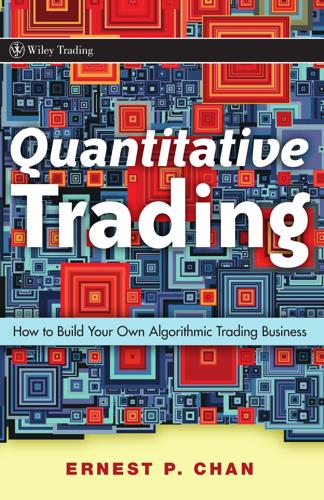
Quantitative Trading: How to Build Your Own Algorithmic Trading Business
by
Ernie Chan
Published 17 Nov 2008
My contention is that it is much more logical and sensible for someone to become a profitable $100,000 trader before xi P1: JYS fm JWBK321-Chan xii September 24, 2008 13:43 Printer: Yet to come PREFACE becoming a profitable $100 million trader. This can be shown to be true on many fronts. Many legendary quantitative hedge fund managers such as Dr. Edward Thorp of the former Princeton-Newport Partners (Poundstone, 2005) and Dr. Jim Simons of Renaissance Technologies Corp. (Lux, 2000) started their careers trading their own money. They did not begin as portfolio managers for investment banks and hedge funds before starting their own fund management business.
…
During August 2007, under the ominous cloud of a housing and mortgage default crisis, a number of well-known hedge funds experienced unprecedented losses, with Goldman Sachs’s Global Alpha fund falling 22.5 percent. Several billion dollars evaporated within all of one week. Even Renaissance Technologies Corporation, arguably the most successful quantitative hedge fund of all time, lost 8.7 percent in the first half of August, though it later recovered most of it. Not only is the magnitude of the loss astounding, but the widespread nature of it was causing great concern in the financial community. Strangest of all, few of these funds hold any mortgage-backed securities at all, ostensibly the root cause of the panic.
…
When you have reached a point where your capacity is higher than what the Kelly formula suggests you can prudently utilize, it P1: JYS c08 JWBK321-Chan 162 August 27, 2008 15:20 Printer: Yet to come QUANTITATIVE TRADING may be time for you to start taking on investors, who will at the very least defray the costs of your infrastructure, if not provide an incentive fee. Alternatively, you might want to take your strategy (and, more importantly, your track record) to one of the larger hedge funds and ask for a profit-sharing contract. After the recent major losses at quantitative hedge funds, many people have started to wonder if quantitative trading is viable in the long term. Though the talk of the demise of quantitative strategies appears to be premature at this point, it is still an important question from the perspective of an independent trader. Once you have automated everything and your equity is growing exponentially, can you just sit back, relax, and enjoy your wealth?
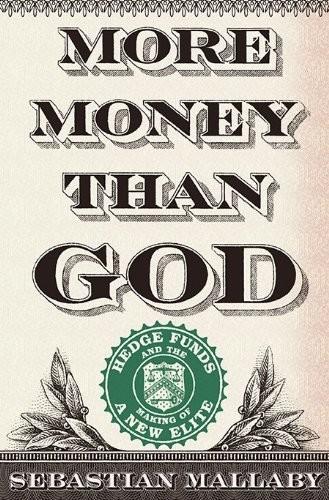
More Money Than God: Hedge Funds and the Making of a New Elite
by
Sebastian Mallaby
Published 9 Jun 2010
Andrei Shleifer, the Harvard economist who had compared the efficient-market theory to a crashing stock, helped to create an investment company called LSV with two fellow finance professors. His coauthor, Lawrence Summers, made the most of a gap between stints as president of Harvard and economic adviser to President Obama to sign on with D. E. Shaw, a quantitative hedge fund.9 Yet the biggest effect of the new inefficient-market consensus was not that academics flocked to hedge funds. It was that institutional investors acquired a license to entrust vast amounts of capital to them. Again, the years after the 1987 crash were an inflection point. Before, most money in hedge funds had come from rich individuals, who presumably had not heard academia’s message that it was impossible to beat the market.
…
Whereas the market disruptions of the 1990s could be viewed as a tolerable price to pay for the benefits of sophisticated and leveraged finance, the convulsion of 2007–2009 triggered the sharpest recession since the 1930s. Inevitably, hedge funds were caught up in the panic. In July 2007, a credit hedge fund called Sowood blew up, and the following month a dozen or so quantitative hedge funds tried to cut their positions all at once, triggering wild swings in the equity market and billions of dollars of losses. The following year was more brutal by far. The collapse of Lehman Brothers left some hedge funds with money trapped inside the bankrupt shell, and the turmoil that followed inflicted losses on most others.
…
The place felt like an upmarket science facility—comfortable, low-key, eerily clean—and on the door of one office along an antiseptic corridor, somebody had stuck an article with the title “Why Most Published Research Findings Are False.” The windowless rooms that housed racks of computer servers were guarded with elaborate key systems, but the facility’s most striking feature was its openness. Whereas other quantitative hedge funds enforced fierce internal Chinese walls, doling out information to employees on a need-to-know basis in an effort to protect secrets, the atmosphere at Renaissance was altogether different. The scientists roamed the corridors freely, constrained only by the danger that Peter Brown would crash into them on his unicycle.
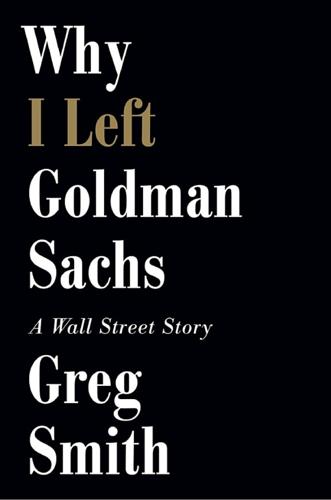
Why I Left Goldman Sachs: A Wall Street Story
by
Greg Smith
Published 21 Oct 2012
I was immediately excited. When the partner in charge of Derivatives Sales offers you an opportunity like this, I thought, you jump on it. I jumped on it. The new job was an opportunity to learn a broader set of derivatives products and diversify my client base into sovereign wealth funds, quantitative hedge funds, and state pension plans. Also, I thought it would be fun. And it worked out. The markets turned around in 2005, and our little Derivatives Sales team—Laura, Connors, and me—began to fire on all cylinders. The fanatical attention to detail that Corey had taught me helped our desk consolidate our gains.
…
The markets kept booming, and Derivatives Sales continued to rack up revenues. Clients were confident: they were trading; they were taking risk. I was executing well for them, which led to more business, because they knew I was looking after them. My clients included some of the biggest asset managers, quantitative hedge funds, and sovereign wealth funds in the world. The commission business—flat, transparent fees on agency orders in things such as futures, exchange-traded funds, and options—was flourishing. The cash register was ringing. But change was in the air. At the end of May, our CEO, Hank Paulson, was appointed U.S. secretary of the treasury, and Lloyd Blankfein became CEO and chairman of Goldman Sachs.
…
It is not the most glamorous work, but make no mistake: quants can be worth their weight in gold; the best ones get paid millions of dollars. Sadly, that’s why actual rocket scientists and engineers leave their professions for the allure of making ten times as much money in finance. Some quants have gone out on their own and started quantitative hedge funds, relying on their smarts and the models they’ve built to generate outsize returns for themselves and their investors. (When you hear someone on Wall Street talk about a “black box,” there isn’t an actual box. It is the computer model that one of these quants has built.) It was my job to cover the biggest quant funds on the Street—in particular, Goldman’s flagship fund, Global Alpha, run by Mark Carhart and Ray Iwanowski; AQR Capital, run by Cliff Asness; and Bridgewater Associates, run by Ray Dalio.

System Error: Where Big Tech Went Wrong and How We Can Reboot
by
Rob Reich
,
Mehran Sahami
and
Jeremy M. Weinstein
Published 6 Sep 2021
In New York during that same period, a thirty-year-old named Jeff Bezos began to realize the commercial possibilities of the internet. Bezos, who had graduated from Princeton University in 1986 with degrees in electrical engineering and computer science, had originally gone to Wall Street to use his analytical skill at quantitative hedge funds such as D. E. Shaw & Co., where he quickly rose to the position of vice president. Working through the decision as to whether he should stay at his lucrative job or make the jump to starting an internet company, he invoked a “regret minimization framework”: he based his decision on minimizing the future regret he might have with regard to the decision he was making at the time.
…
Only when the system isn’t able to get you the help you need will a human be brought in to intervene. That seems very likely to reduce the number of customer support representatives needed. How about the world of finance? Increasingly, AI is used to power ever-more-sophisticated models for trading equities, commodities, and derivatives. Called “quantitative hedge funds,” these systems use algorithmic techniques, frequently powered by machine learning models, to make split-second transactions on everything from Apple stock to zinc futures. One of the pioneers in this area, Renaissance Technologies, was founded by Jim Simons, a mathematics PhD who had spent time working at the National Security Agency on code breaking—a somewhat different but equally quantitative form of pattern recognition.
…
., 71, 166 Stanford panel discussion on, 119–20 technology and biomedical research, 129–33 See also facial recognition technology private right of action in California, 147 procedural fairness, 92–93 professional ethics, xxx–xxxi, 244 ProPublica investigation of racism in Florida’s criminal court, 97 Public Access to Court Electronic Records (PACER), xxiii public health vs. factory farms, 20–21 Putin, Vladimir, 84 quantitative hedge funds using AI, 163–64 Rabois, Keith, 191–92 racial discrimination in machine-based recruiting system, 80–81 Rahwan, Iyad, 179 random “noise” in data, 131–32 randomized response survey design, 131–32 Rawls, John, 93–94 Reagan, Ronald, 258–59 Really Simple Syndication (RSS) specification, xxii recruiting system with gender bias, 81–82, 83 Reddit, xxii, 44 regret minimization framework, 30 regulations overview, 53 antitrust-based, 55–59, 227–28 based on OTA nonpartisan information, 258 constrain market dominance of big tech companies, 256–57 for creating healthy market competition, 229–30 government’s complicity in absence of, 59–63 matching tech sector innovation with appropriate regulatory structures, 261 medical research and education regulations, 244–51 policy-makers’ dilemma, 56–57 and politicians’ limited tech knowledge, 52–53 on tech start-ups, 45 technical ignorance of lawmakers, 71–72 technology companies lobby for autonomy, 46 when social consequences become intolerable, 55 Reich, Rob, xvi, 22–23 Renaissance Technologies, 163–64 representational adequacy, 13 Republic, The (Plato), 65–66 résumés and algorithmic decision-making, 82–87, 109 revenue optimization process, 43–45 Rhinehart, Rob, 7–9, 20 road safety, 154–55, 239 role of citizens in a democracy, xiv Romer, Paul M., 58–59, 176 Rush, Benjamin, 3 safety, 53–54, 55, 133–34, 154–55, 239 Sahami, Mehran, xv, 27, 38 Samuel, Arthur, 84, 156 San Bernardino, California, terrorist attack, 72, 134–35 Sanger, Larry, 195 Schatz, Brian, 240 Scholes, Myron, 59 search engine optimization (SEO), 196 Section 230, Communications Decency Act (CDA 230), 62, 221–23, 225 security, 20, 56, 71–72, 111–14, 116–17, 121–25, 128–29, 134–35, 141, 156, 166, 258 self-driving vehicles DARPA Grand Challenge, 153–54 effect on truck drivers and trucking industry, 175 human nature vs., 155–56 human pleasure from driving, 172 safety of, 154–55 in Silicon Valley, 186 society’s response to, 175 Sen, Amartya, 74, 172–73 separations regime, 229 September 11, 2001, terrorist attacks, 116 Sherman, John, 228 Sherman, Rob, 119–20 Shklar, Judith, 76 Siebel, Michael, 40 Sifton, Sam, 9 Silicon Valley, xiv, xxv–xxvi, 28, 40–41, 73 Silverberg, Nicole, 188 Simplex algorithm, 12 smart machines and humans, 153–86 overview, 160–65 autonomous weapons, 177–78 benefits for people whose jobs are changed or lost, 182–86 choice of human flourishing or greater productivity, 169 deep learning concept, 161–62 ethics and AI, 165–66 jobs lost and other costs of adjustment, 174–76 keeping humans in the loop, 178–82 livelihood destroying potential, 170–71 overcoming poverty to promote human flourishing, 170–71 value of freedom, 172–73 virtual reality, the experience machine, 167–69 Snowden, Edward, 116, 126, 139, 143–45 social and political ethics, xxxi–xxxiii Social Dilemma, The (documentary), 238–39 “Social Responsibility of Business Is to Increase Its Profits, The” (Friedman), 37–38 social safety nets, Europe and US compared, 185–86 social science, xv–xvii, xxvi, 137–40 Software Engineering Code of Ethics, 248 Solove, Daniel, 140 Soylent, 6–9, 20 Soylent Green (film), 7–8 Spliddit’s “provably fair solutions,” 88–89 Stanford University, Stanford, California overview, xiv, xv, xvi hate speech or hateful protected speech, 191–92 panel discussion on privacy concerns, 119–20 study of libertarian attitudes of tech leaders, 52 teaching computer science with social science and ethics, 251 VCs showcasing their new companies, 42–45 start-up accelerators, 44.

Adaptive Markets: Financial Evolution at the Speed of Thought
by
Andrew W. Lo
Published 3 Apr 2017
He first introduced me to several models in theoretical biology that were particularly relevant to economics, and in 1999 he and I published a paper outlining the possibility of applying evolutionary arguments to the Efficient Markets Hypothesis.22 He has since published many more papers applying ideas in physics and biology to finance. In addition to his academic pursuits, Doyne cofounded a successful quantitative hedge fund called Prediction Company with his fellow physicist, Norman Packard. This fund uses multiple algorithmic trading strategies to make money in stock markets around the world. Based on his experience, Doyne published a fascinating article in 2002 titled “Market Force, Ecology, and Evolution,” where he developed a precise analogy between financial markets and biological ecologies.
…
Finally, Thursday evening, central banks around the world acted in unison and injected billions of dollars into the global banking system because of a temporary breakdown in the overnight interbank lending market. This intervention may well have relieved the pressure to liquidate various holdings among the largest banks, including statarb portfolios. Amir Khandani and I called this narrative the “Unwind Hypothesis.” This explanation meant good news and bad news for the quantitative hedge fund industry. The good news is that quantitative funds were singled out during the week of August 6, 2007, not because of a breakdown in any specific quantitative strategy, but more likely due to the sudden liquidation of a large quantitative equity market-neutral portfolio. The bad news is that these losses imply a growing systemic risk in the hedge fund sector (not to be confused with systematic risk).
…
But liquidity isn’t easy to measure—you can’t look it up on a Bloomberg terminal—and we may not notice its changes over time and therefore can’t adapt appropriately. This became painfully clear to Amir Khandani and me when we ran one further simulation in our August 2007 research.38 In the last chapter, I described our simulation of a daily mean-reversion strategy based on how well stocks performed the previous day. But the most sophisticated quantitative hedge funds trade from minute to minute, second to second, and nowadays, even microsecond to microsecond. So Amir and I decided to simulate a higher-frequency strategy using transaction prices for all trades in the S&P 1500, time-stamped to the nearest tenth of a second, from July 2, 2007, to September 30, 2007, a three-month period surrounding the Quant Meltdown.
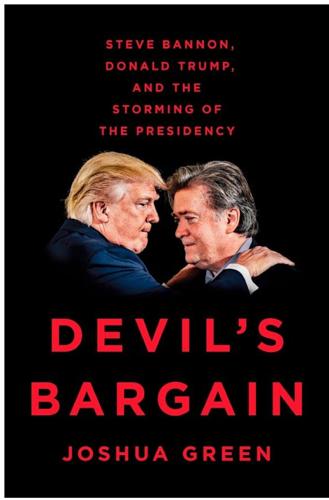
Devil's Bargain: Steve Bannon, Donald Trump, and the Storming of the Presidency
by
Joshua Green
Published 17 Jul 2017
He was dressed up as one of his favorite movie characters of all-time, Brigadier General Frank Savage, the tough-as-nails commander, played by Gregory Peck, who takes over a demoralized World War II bombing unit and whips them into fighting shape in the 1949 classic Twelve O’Clock High. Ordinarily, Bannon wasn’t big into cosplay. But this was a special occasion: the annual Christmas party thrown by the reclusive billionaire Robert Mercer, an eccentric computer scientist who was co-CEO of the fabled quantitative hedge fund Renaissance Technologies. As introverted and private as Bannon was voluble and outspoken, Mercer was nonetheless a man of ardent passions. He collected machine guns and owned the gas-operated AR-18 assault rifle that Arnold Schwarzenegger wielded in The Terminator. He had built a $2.7 million model train set equipped with a miniature video camera to allow operators to experience the view from inside the cockpit of his toy engine.
…
“Statistical machine translation,” as the process became known, soon outpaced the old method and went on to become the basis of modern speech-recognition software and tools such as Google Translate. At Renaissance, Mercer and Brown applied this approach broadly to the markets, feeding all kinds of abstruse data into their computers in a never-ending hunt for hidden correlations. Sometimes they found them in strange places. Even by the paranoid standards of black-box quantitative hedge funds, Renaissance is notoriously secretive about its methods. But in 2010, one intriguing example of the patterns it turns up became public. As the author Sebastian Mallaby details in his history of the hedge-fund industry, More Money Than God, a group of scientists at the firm’s flagship Medallion Fund discovered a correlation between weather patterns and market performance.
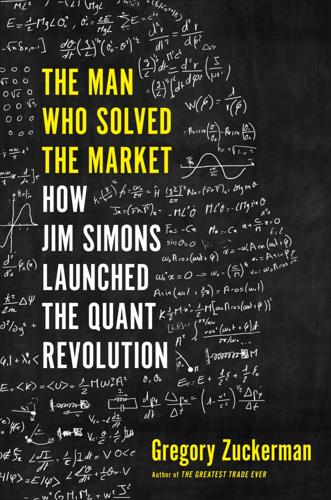
The Man Who Solved the Market: How Jim Simons Launched the Quant Revolution
by
Gregory Zuckerman
Published 5 Nov 2019
Most senior investors were on vacation, after all, so reading into the losses didn’t seem worthwhile. By that summer, a group of quantitative hedge funds had emerged dominant. Inspired by Simons’s success, most had their own market-neutral strategies just as reliant on computer models and automated trades. In Morgan Stanley’s midtown Manhattan headquarters, Peter Muller—a blue-eyed quant who played piano at a local club in his free time—led a team managing $6 billion for a division of the bank called PDT. In Greenwich, Connecticut, Clifford Asness, a University of Chicago PhD, helped lead a $39 billion quantitative hedge-fund firm called AQR Capital Management. And in Chicago, Ken Griffin—who, in the late 1980s, had installed a satellite dish on his dormitory roof at Harvard to get up-to-the-second quotes—was using high-powered computers to make statistical-arbitrage trades and other moves at his $13 billion firm, Citadel.

Nerds on Wall Street: Math, Machines and Wired Markets
by
David J. Leinweber
Published 31 Dec 2008
He hired young Columbia computer science professor David Shaw. At first, a few papers about hooking Unix systems to market systems emerged. Then the former academics realized there was no alpha in publications. Shaw went on to found D.E. Shaw & Company, one of the largest and most consistently successful quantitative hedge funds. Fischer Black’s Quantitative Strategies Group at Goldman Sachs were algo pioneers. They were perhaps the first to use computers for actual trading, as well as for identifying trades. The early alpha seekers were the first combatants in the algo wars. Pairs trading, popular at the time, relied on statistical models.
…
Back on the banks of the Charles in Boston 25 years later, Andy Lo wrote,“Profits may be viewed as the economic rents which accrue to [the] competitive advantage of . . . superior information, superior technology, financial innovation. . . .”4 If this conjures up images of ever faster, better, larger computing engines at giant quantitative hedge funds, you are getting the message. But this idea is not suddenly true today; it has been true forever. Innovations used to use less electricity, though. In 1790, the technology that produced vast alpha for innovative traders was boats. After the American Revolution, war bonds were trading for less than a nickel on the dollar.

On the Future: Prospects for Humanity
by
Martin J. Rees
Published 14 Oct 2018
These are murkier, and there is no consensus among experts on the speed of advance in machine intelligence—and indeed on what the limits to AI might be. It seems plausible that an AI linked to the internet could ‘clean up’ on the stock market by analysing far more data far faster than any human. To some extent this is what quantitative hedge funds are already doing. But for interactions with humans, or even with the complex and fast-changing environment encountered by a driverless car on an ordinary road, processing power is not enough; computers would need sensors that enable them to see and hear as well as humans do, and the software to process and interpret what the sensors relay.
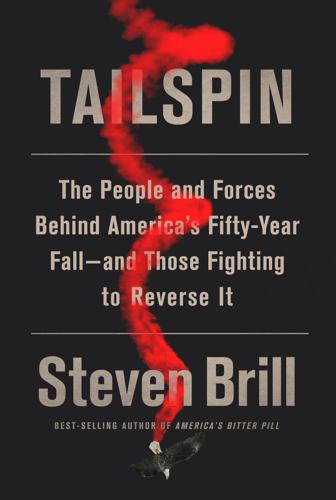
Tailspin: The People and Forces Behind America's Fifty-Year Fall--And Those Fighting to Reverse It
by
Steven Brill
Published 28 May 2018
They, too, were in it for the short term. The change was revolutionary. In 1960, stock was held by its owner for an average of eight years and four months. In 1980, the average was two years, nine months. In 2016 the average was four months, and high-frequency, split-second trading of stocks, often done by quantitative hedge funds—another creation of the knowledge economy, which buy and sell stocks based on algorithms—was estimated to account for roughly half of all stock trades. If shareholders were now in it for the short term, so, too, were the managers of the shareholders’ companies. Their compensation increasingly depended, Jensen-style, on the quarterly or annual increase in the stock price.
…
In 1960, stock was held: PolitiFact used historical data from the New York Stock Exchange to compute these averages: Warren Fiske, “Mark Warner Says Average Holding Time for Stocks Has Fallen to Four Months,” PolitiFact, July 6, 2016, http://www.politifact.com/virginia/statements/2016/jul/06/mark-warner/mark-warner-says-average-holding-time-stocks-has-f/. In 1980, the average: Ibid. In 2016 the average: Ibid. quantitative hedge funds: Gregory Zuckerman and Bradley Hope, “The Quants Run Wall Street Now,” Wall Street Journal, May 21, 2017, https://www.wsj.com/articles/the-quants-run-wall-street-now-1495389108?utm_source=newsletter&utm_medium=email&utm_campaign=newsletter_axiosfutureofwork&stream=future-of-work. estimated to account for roughly half: Ryan Vlastelica, “High-Frequency Trading Has Reshaped Wall Street in Its Image,” Marketwatch, March 17, 2017, http://www.marketwatch.com/story/high-frequency-trading-has-reshaped-wall-street-in-its-image-2017-03-15?
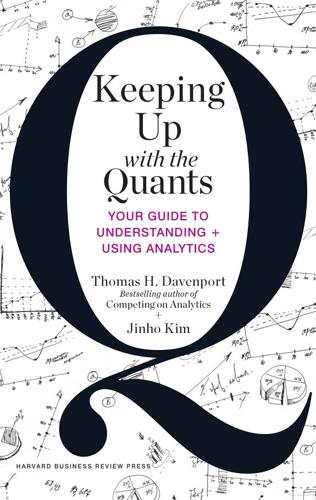
Keeping Up With the Quants: Your Guide to Understanding and Using Analytics
by
Thomas H. Davenport
and
Jinho Kim
Published 10 Jun 2013
As Charles Duhigg has noted in a recent book, The Power of Habit, human behavior, once established, can be remarkably persistent over time.4 That allows us to magically predict the future on the basis of the past. Some organizations utilize high-priced talent just to ask penetrating questions about assumptions. Take Larry Summers, for example. The former economic adviser to the Clinton and Obama adminstrations and former president of Harvard University has worked as an adviser to D.E. Shaw, a quantitative hedge fund. Tom ran into Summers at a social occasion and asked him what he did for the company. He said, “I go in once a week and walk around the desks of the quants who build mathematical trading models. I ask them what the assumptions are behind their models, and under what circumstances they would be violated.
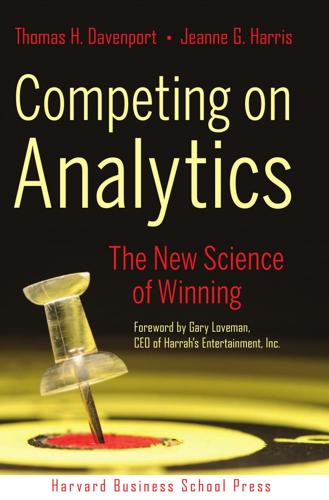
Competing on Analytics: The New Science of Winning
by
Thomas H. Davenport
and
Jeanne G. Harris
Published 6 Mar 2007
One team that has adopted the “moneyball” approach is the Boston Red Sox—a team with both analytical capabilities and the money to invest in expensive players. The Red Sox also had a business need, having failed to win the World Series for eighty-six years by the 2004 season. The Sox also exemplify another reason why organizations adopt analytical competition: new leadership. The team’s two new principal owners in 2002 were John Henry, a quantitative hedge fund manager, and Tom Werner, a television producer who had previously owned the San Diego Padres. The appeal of analytics to Henry was obvious, but Werner had also realized with the Padres that the traditional baseball establishment didn’t know as much about what led to championships as it purported to.
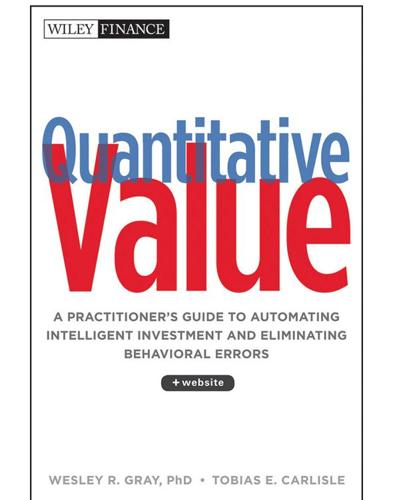
Quantitative Value: A Practitioner's Guide to Automating Intelligent Investment and Eliminating Behavioral Errors
by
Wesley R. Gray
and
Tobias E. Carlisle
Published 29 Nov 2012
While we know the past results for Quantitative Value have been outstanding, it often feels like one or more of the current crop of stocks selected by the model are particularly weak and should be avoided. Surely we can pick and choose from the model's output? Jim Simons disagrees. The billionaire mathematician turned quantitative hedge fund titan, believes that much of his success is attributable to his strict adherence to the output of his models6: Did you like what the model said or did you not like what the model said? That is a hard thing to backtest. If you are going to trade using models, you just slavishly use the models; you do whatever the hell it says no matter how smart or dumb you think it might be at that moment.”
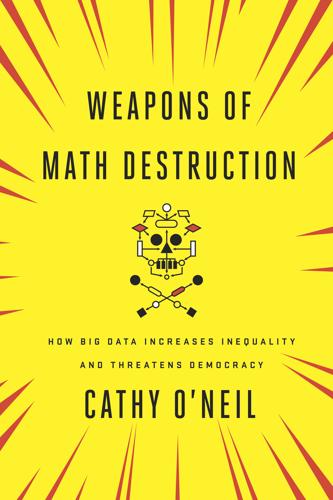
Weapons of Math Destruction: How Big Data Increases Inequality and Threatens Democracy
by
Cathy O'Neil
Published 5 Sep 2016
To come up with these odds, scientists run thousands upon thousands of simulations. There was plenty to complain about with this method, but it was a simple way to get some handle on your risk. My job was to act as a liaison between our risk management business and the largest and most discerning connoisseurs of risk, the quantitative hedge funds. I’d call the hedge funds, or they’d call me, and we’d discuss any questions they had about our numbers. As often as not, though, they’d notify me only when we’d made a mistake. The fact was, the hedge funds always considered themselves the smartest of the smart, and since understanding risk was fundamental to their existence, they would never rely entirely on outsiders like us.
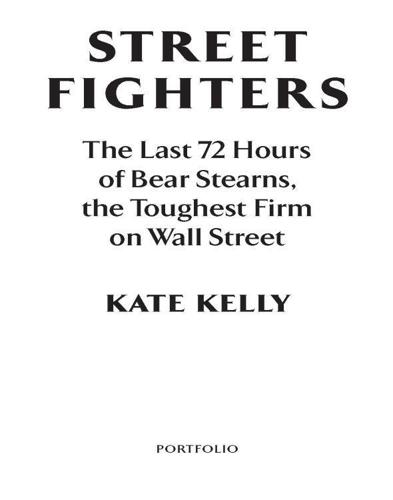
Street Fighters: The Last 72 Hours of Bear Stearns, the Toughest Firm on Wall Street
by
Kate Kelly
Published 14 Apr 2009
But Marano could not get things under control. The combination of falling asset prices and a huge debt load made it impossible to pay creditors back. Late in July, he reluctantly filed for bankruptcy protection for both funds. In August, market conditions turned hellacious. During the first week alone, a number of quantitative hedge funds, which rely on sophisticated mathematical predictions to make trades, sustained double-digit percentage losses. Securities firm stocks were getting hit, too. Bear had lost more than $50 per share since its spring high, and competitors like Lehman and Merrill were also getting crushed. On Friday, August 3, Standard & Poor’s confirmed what many investors and rival firms had come to believe.
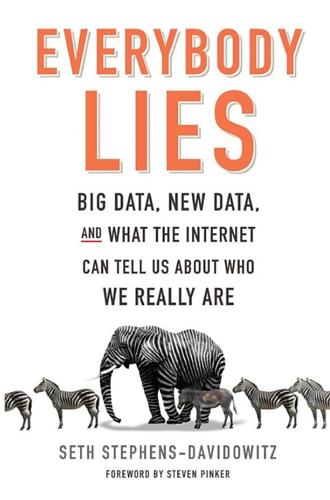
Everybody Lies: Big Data, New Data, and What the Internet Can Tell Us About Who We Really Are
by
Seth Stephens-Davidowitz
Published 8 May 2017
I was quite taken during our conversation by how much respect he had for them and how many of my suggestions he was convinced they’d beaten us to. I proudly shared with him an algorithm I had devised that allowed me to obtain more complete Google Trends data. He said it was clever. When I asked him if Renaissance, a quantitative hedge fund, would have figured out that algorithm, he chuckled and said, “Yeah, of course they would have figured that out.” The difficulty of keeping up with the hedge funds wasn’t the only fundamental problem that Summers and I ran up against in using new, big datasets to beat the markets. THE CURSE OF DIMENSIONALITY Suppose your strategy for predicting the stock market is to find a lucky coin—but one that will be found through careful testing.
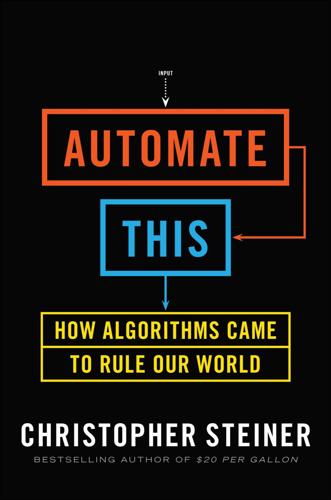
Automate This: How Algorithms Came to Rule Our World
by
Christopher Steiner
Published 29 Aug 2012
Such regulation is “appallingly paternalistic,” says 23andMe, adding that people have a right to information contained within their own genes. Such genomic scanning is now fast and affordable, thanks in part to Nick Patterson, a Wall Street hacker who after eight years at Renaissance Technologies, the quantitative hedge fund, joined up with the Broad Institute, a joint research center of Harvard and MIT, in 2001. Working at Renaissance, which makes money off of sorting data and spotting patterns that nobody else can, made Patterson the perfect person to help the Broad Institute, which was drowning in DNA data so deep that the researchers there found it to be unnavigable.

Capitalism Without Capital: The Rise of the Intangible Economy
by
Jonathan Haskel
and
Stian Westlake
Published 7 Nov 2017
It’s easy to imagine how low-skilled workers in developed countries might lose out if they don’t have the skills to work with computers, or if their jobs are threatened by lower-paid workers in other countries. But the way these changes would benefit only the very rich is less clear. Some of the very rich have gotten richer because of technology or because they employ cheap foreign labor. But certainly not all. For every Silicon Valley mogul or quantitative hedge fund owner, there are a lot of senior managers of what we’d think of as normal businesses among the new elite. Piketty, for example, estimates that between 60 and 70 percent of the top 0.1 percent are chief executives and other senior corporate managers. A third confounding fact is the role of housing in wealth inequality.
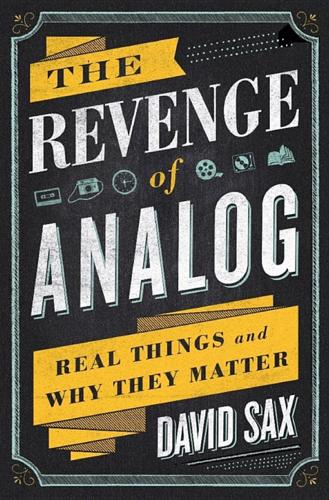
The Revenge of Analog: Real Things and Why They Matter
by
David Sax
Published 8 Nov 2016
The speed and volume of transactions that digital technology enabled amplified the volatility of the market and the asset bubble more than anyone could have predicted. “The limitations of organic human memory and calculation used to put a cap on the intricacies of self-delusion,” wrote computer scientist and philosopher Jaron Lanier in his book You Are Not a Gadget. The rise of quantitative hedge funds turned capitalism into “search engines,” which Lanier described as the perfect “blending of cyber-cloud faith and Milton Friedman economics.” The recession hit when the real world couldn’t support the numbers being assigned to it by computers and speculators. The computer’s calculations were off, it turned out.
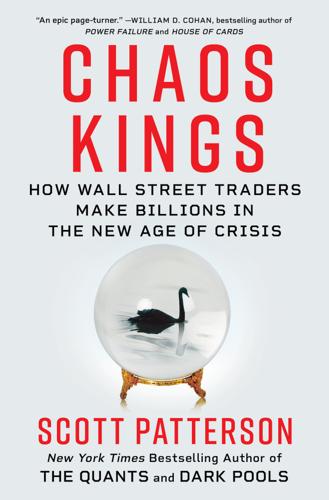
Chaos Kings: How Wall Street Traders Make Billions in the New Age of Crisis
by
Scott Patterson
Published 5 Jun 2023
The products could be extremely risky because the blockchain mechanism made the payout nearly automatic—typically within forty-eight hours—rather than the months or years it can take a normal insurer to pay on a claim. That meant the hedge fund offering to provide the insurance needed to be ready to fulfill a claim at the drop of a hat. It was also tied to massive, in some ways unquantifiable risk. But some were intrigued. The deals had interesting, complex aspects that draw highly quantitative hedge funds like bees to honey. By the end of 2021, Schmalbach had inked six deals worth about $3 billion (that is, the products covered $3 billion worth of risk). By 2022, Schmalbach, acting again on Thomson’s advice, opened an office in Hartford, Connecticut, handily close to the state insurance regulators and a forty-five-minute drive from Greenwich.
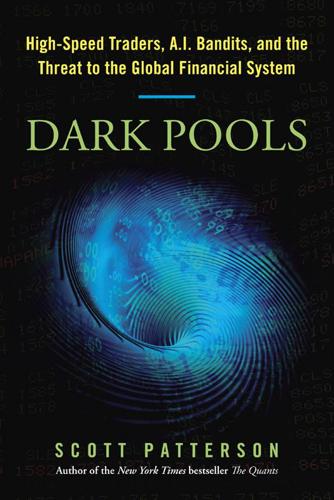
Dark Pools: The Rise of the Machine Traders and the Rigging of the U.S. Stock Market
by
Scott Patterson
Published 11 Jun 2012
At Amherst, Fleiss learned about the overwhelming success of Renaissance Technologies, the Long Island hedge fund that had started using Island in the late 1990s. While Fleiss was good at math, his skills didn’t come close to the abilities of a Jim Simons or a Peter Brown. But he did know one person he thought could go toe-to-toe with them: Spencer Greenberg. Fleiss began an aggressive campaign to convince Greenberg to help him start a quantitative hedge fund. At first, Greenberg was skeptical that higher-order math could be used on the market. But as he learned more about Renaissance, he began to think there might be more to what Fleiss was saying. While at Columbia, Greenberg started to consider various mathematical strategies that he could deploy in the market.
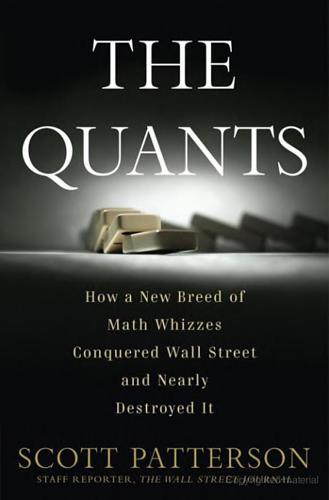
The Quants
by
Scott Patterson
Published 2 Feb 2010
His elite team of traders, hidden away in a small enclave on Long Island, marshaled the most mind-bending advances in science and mathematics, from quantum physics to artificial intelligence to voice recognition technology, to wring billions in profits from the market. Simons was the rare investor who could make Muller feel jaw-clenchingly jealous. The two had known each other since the early 1990s, when Muller briefly considered joining Renaissance before starting his own quantitative hedge fund inside Morgan Stanley, the giant New York investment bank. Muller’s elite trading group, which he called Process Driven Trading, was so secretive that even most employees at Morgan weren’t aware of its existence. Yet over the previous decade the group, composed of only about fifty people, had racked up a track record that could go toe-to-toe with the best investment outfits on Wall Street, cranking out $6 billion in gains for Morgan.
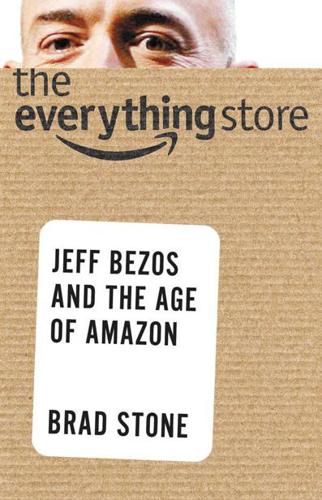
The Everything Store: Jeff Bezos and the Age of Amazon
by
Brad Stone
Published 14 Oct 2013
It’s the tale of how one gifted child grew into an extraordinarily driven and versatile CEO and how he, his family, and his colleagues bet heavily on a revolutionary network called the Internet, and on the grandiose vision of a single store that sells everything. PART I Faith CHAPTER 1 The House of Quants Before it was the self-proclaimed largest bookstore on Earth or the Web’s dominant superstore, Amazon.com was an idea floating through the New York City offices of one of the most unusual firms on Wall Street: D. E. Shaw & Co. A quantitative hedge fund, DESCO, as its employees affectionately called it, was started in 1988 by David E. Shaw, a former Columbia University computer science professor. Along with the founders of other groundbreaking quant houses of that era, like Renaissance Technologies and Tudor Investment Corporation, Shaw pioneered the use of computers and sophisticated mathematical formulas to exploit anomalous patterns in global financial markets.

The Ascent of Money: A Financial History of the World
by
Niall Ferguson
Published 13 Nov 2007
They had understood the beautiful theory of Planet Finance, but overlooked the messy past of Planet Earth. And that, put very simply, was why Long-Term Capital Management ended up being Short-Term Capital Mismanagement. It might be assumed that after the catastrophic failure of LTCM, quantitative hedge funds would have vanished from the financial scene. After all, the failure, though spectacular in scale, was far from anomalous. Of 1,308 hedge funds that were formed between 1989 and 1996, more than a third (36.7 per cent) had ceased to exist by the end of the period. In that period the average life span of a hedge fund was just forty months.101 Yet the very reverse has happened.

The Contrarian: Peter Thiel and Silicon Valley's Pursuit of Power
by
Max Chafkin
Published 14 Sep 2021
Despite the haughty-sounding name, the company had little to do with Cambridge University—in fact, its office was in London—but Nix’s plan had been to market ideas that had been developed at Cambridge about using people’s Facebook data to guess their personality type. He would raise money from Steve Bannon and the ultra-conservative Mercer family, led by the patriarch Bob, who’d gotten rich at a quantitative hedge fund, and his daughter Rebekah. The Mercers were backers of Bannon’s news outlet, Breitbart, and had invested in Nix’s pitch to adapt the Facebook concept for use in electoral politics, enabling political campaigns to scan someone’s social network profile, predict who they were going to vote for, and serve them ads to get them to show up to the polls.

Terms of Service: Social Media and the Price of Constant Connection
by
Jacob Silverman
Published 17 Mar 2015
(Investors, some shaken by the recession, were reportedly leery of putting their money in such novel investment funds.) Most hedge funds looking at social-media data seem to be taking this kind of approach, buying packages of analysis from third-party firms. As the proverb about the California gold rush goes, it often pays more to sell the shovels than to use them to dig. But at least twelve quantitative hedge funds pay a firm called Gnip to pipe all of the over 500 million or so tweets produced each day directly into their platforms. Sentiment analysis is a perfect product for a tech industry awash in data and searching for ways to make money off it. It’s but another way in which the behaviors, actions, identities, and feelings of Internet users are being bought and sold, often without their knowledge, and put toward uncertain ends.

Amazon Unbound: Jeff Bezos and the Invention of a Global Empire
by
Brad Stone
Published 10 May 2021
Lisa Utzschneider, Amazon’s longtime global VP of ad sales, who had previously reported directly to S-team member Jeff Blackburn, quit in frustration six months later to work for Yahoo. Amazon’s nascent advertising effort was in tatters. Kotas had joined Amazon in 1999 from D. E. Shaw, the Wall Street quantitative hedge fund where Bezos had conceived the original idea for an online bookseller. He liked to tell employees the story of how Bezos had actually recruited him to join Amazon in 1997. His bags were packed for Seattle when he decided to stay at the hedge fund at the last minute. The change of heart ended up costing Kotas millions.

Human Diversity: The Biology of Gender, Race, and Class
by
Charles Murray
Published 28 Jan 2020
In a population of 250 million adults—roughly the number of Americans ages 20 and older—the top 0.1 percent amounts to 250,000 people. Think about the 250,000 people with the nation’s highest visuospatial and math skills. They constitute some substantial proportion of the top programmers and hardware designers in Silicon Valley, the staffs of quantitative hedge funds, and the nation’s most eminent mathematicians, physicists, chemists, biologists, and engineers. Apply the same logic to other fields requiring different abilities—the 250,000 most gifted attorneys, the 250,000 most gifted managers, the 250,000 most gifted in the performing arts. America is far from having tapped the talents of all 250,000 of the most gifted in any field, but it is probable that a large proportion of the most important accomplishments in all fields are done by those who are in the top 0.1 percent, three standard deviations above the mean.